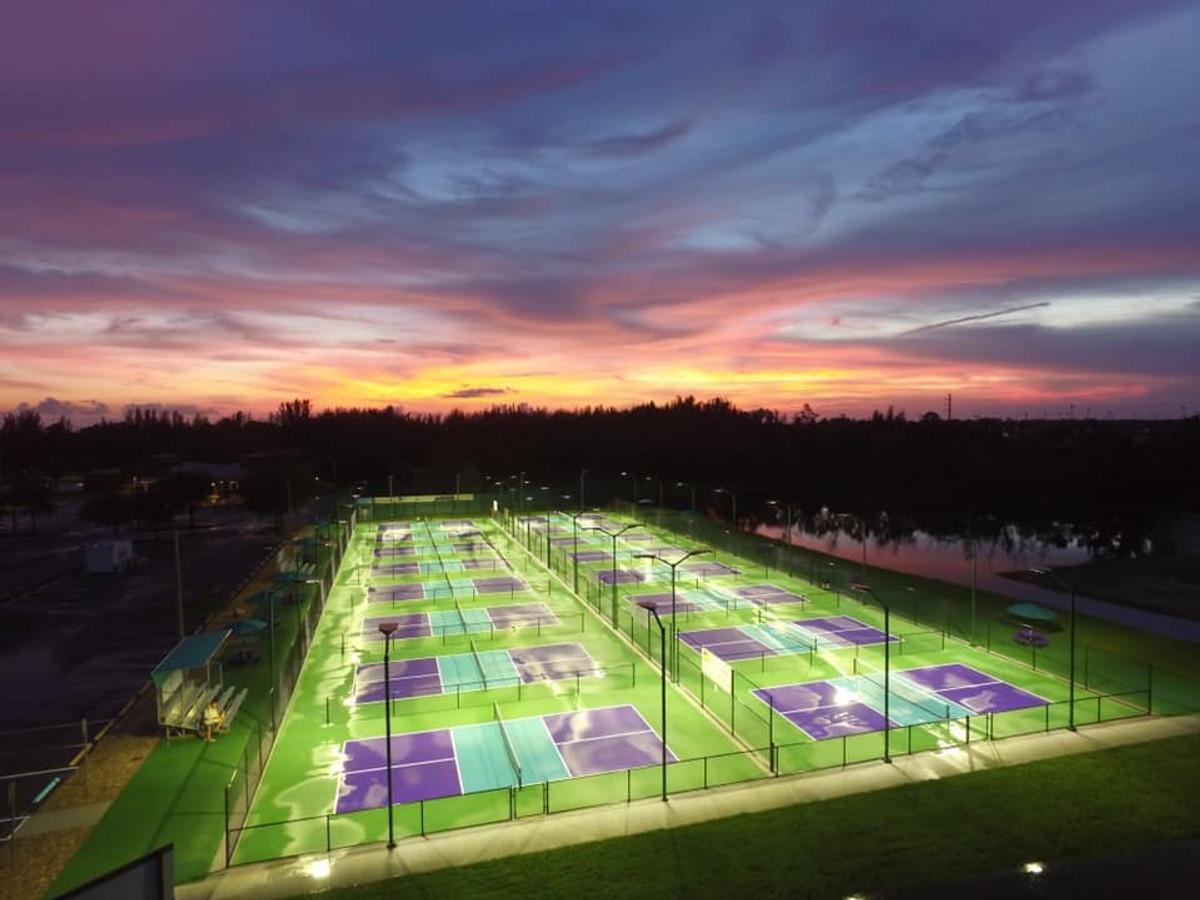
Pickleball has become a very popular game in the United States in recent years. It is similar to badminton and tennis and is popular among all ages, but especially among the Baby Boomer generation now that they are approaching their golden years.
Pickleball is a combination of tennis, table tennis, and badminton. The layout and dimensions of a pickleball court are comparable to a badminton court. Meanwhile, the rules are similar to tennis. Pickleball paddles share features of table tennis paddles, which are solid and usually made of wood.
Due to its popularity, pickleball courts are popping up everywhere. This includes parks, condo complexes, and retirement communities.
Like other types of outdoor sports courts, you may want to illuminate your outdoor pickleball court at night so that it is available for longer periods of time. There are many factors to consider when undertaking this type of project for pickleball lighting design. Illuminating a pickleball court will be different than with a tennis court, for example. The difference in court sizes will entail different pickleball lighting requirements. This article will help you determine what you’ll need to do to meet pickleball lighting standards.
How Much Light is Needed for Pickleball Courts?
Standard court size determined by USA Pickleball:
For reference: The playing area for pickleball courts is rectangular and looks much like a tennis or a badminton court. The standard dimensions of a pickleball court are 20 feet by 44 feet for singles and doubles with a minimum total playing surface of 30 feet by 60 feet (34 feet by 64 feet is recommended).
For high-level play, doubles courts can be larger (30 feet by 60 or 64 feet).

In general, light pole mounting should be located on the sides of the court with the fixtures directing light across the court. The side positioning creates the least glare since the fixtures' orientation is 90 degrees to the main viewing directions of the players.
The number of courts that you’ll be illuminating will be another determining factor for light pole and light fixture placement.
Level of play
The first thing to consider is what the skill level of play will be. More light will be needed for higher skill levels than for lower skill levels or recreational play. The levels of play are classified here (fc = foot candles):
- Class I: Professional level 70 fc (horizontal) x 40 fc (vertical)
- Class II: Club competitions 45 fc (horizontal) x 35 fc (vertical)
- Class III: Recreational 30 fc (horizontal) x 20 fc (vertical)
Illumination levels and mounting height
Pickleball court standards require illumination to be supplied by luminaires mounted on twenty-foot-high poles that deliver an average of 30 footcandles (fc), and a max/min ratio of 2.0 or less.
Mounting the luminaires below the recommended 20 feet could result in the ball disappearing if it goes above the lights at a high arc (and reappearing somewhere else when it comes back down).
Light levels lower than 30 fc will result in lower visibility.
Max/min ratio measures the evenness of the light distribution (Maximum level of light in the area divided by minimum light in the area). The max/min ratio for a pickleball court should be 2.0 (1.7 for a Class I court).
The Correlated Color Temperature (CCT) of the lights should be between 4000K (natural white) and 5000K (cool white). The lighting should not go outside of this range. 5000K is recommended for higher skill levels and public installations. 4000K is recommended for residential installations.
The Color Rendering Index (CRI) of the lights should be above 70.
For more information, see USA Pickleball’s lighting standards here.

Other Factors to Consider
- Light fixtures will need to be able to withstand moisture and dust (IP ratings) and impacts (IK ratings).
- It is recommended that you use LED lights. They provide more energy savings and are longer lasting than any other type of lighting. They will help save money on electric bills and maintenance costs.
- Dark Sky compliance/light pollution prevention: Some municipalities require outdoor lights that will not “spill over” into surrounding areas. These lights will need to be more directional and/or shielded to prevent light pollution.
- Local building ordinances require that pickleball court poles safely withstand the windspeed required to survive hurricanes, typhoons, and other assorted meteorological events. This requires that the sports lighting have a low EPA to minimize the walls and gauge of a pole, while the pole can withstand the weather event. These requirements will depend on the geographical area in which the poles are installed.
Play Safely with Help from LightMart.
Poles material options:
- The most commonly used light poles for pickleball are square steel poles. They are also the most economical. However, LightMart also offers round straight and round tapered steel poles. Other options include aluminum and fiberglass light poles for your pickleball facility.
- If you need something quickly, we offer a wide range of quick-ship light poles that are in stock.
- We also offer Pickleball Lighting Systems that include light poles and fixtures.
Proper court lighting will enhance players’ safety and game integrity. Our experienced staff is here to help you plan your next pickleball court lighting project. Contact us today!
David DeWald is the E-Commerce Marketing Specialist at LightMart. He has been working in the industrial and commercial lighting industry since 2013 and is based in the greater Chicago area. David specializes in digital product management, web content writing, and product marketing. He regularly publishes lighting industry-related articles on the LightMart blog. You can visit his LinkedIn profile here.
